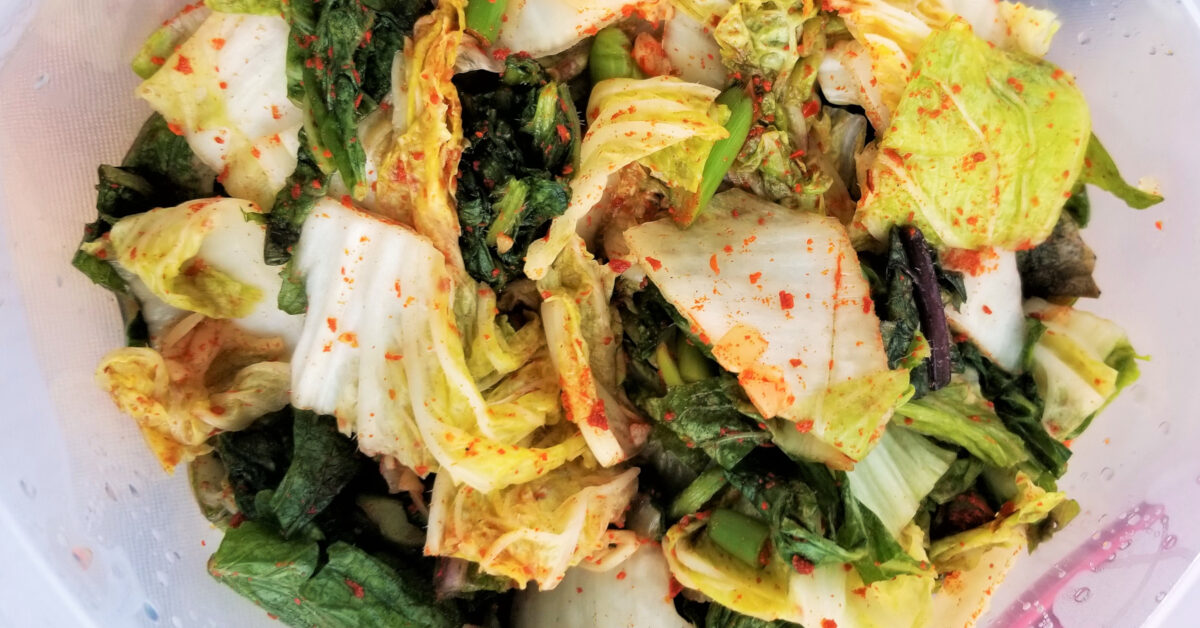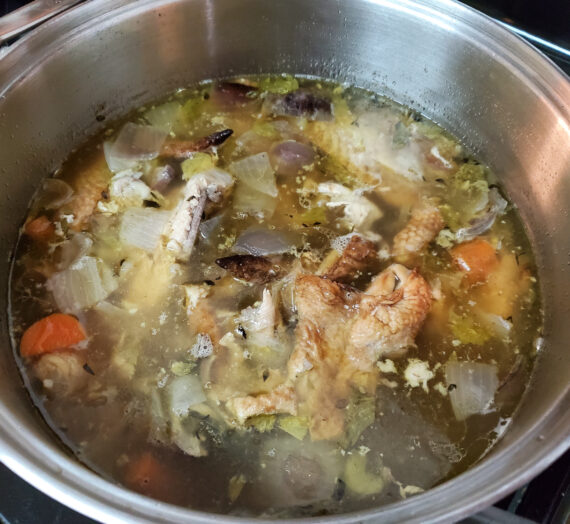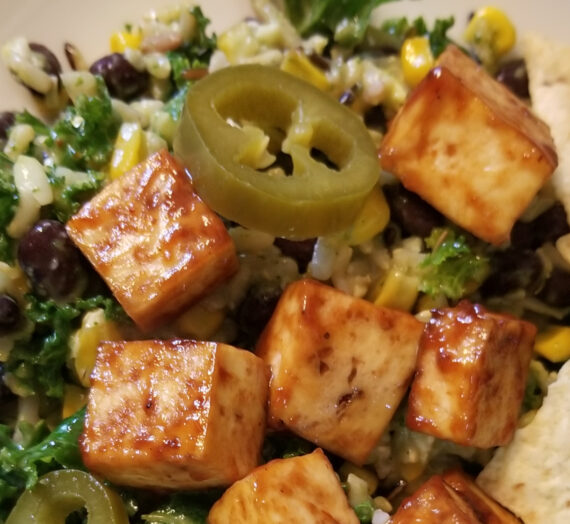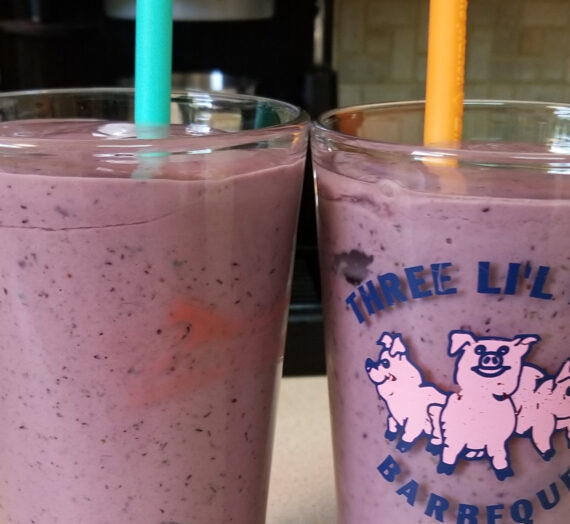It’s July, and summer produce is in full swing here in central Virginia. Since May, Chez Thorburn has been fueled by a weekly influx of fresh veggies, fruits, cheese, and sometimes meat from Fall Line Farms & Local Roots.
To keep meal prep excitingly unpredictable, we have often opted for a mystery veggie box from a specific farm, containing anything the grower deemed best that week. Then we have to figure out what everything is, and how to eat it as quickly as possible. Roasting, blanching-and-freezing, and pickling are particularly helpful toward this end.
So far, we have been quite into pickling. At one point just a few weeks ago, our fridge simultaneously contained pickled purple daikon, bread and butter pickles, jalapeños, red onions, homemade kraut…and kimchi.
So, if you combine these two realities–super fresh local produce and our current pickling fixation–it is perhaps not surprising that (so far) we have made two giant batches of quick kimchi this summer. The next batch will likely happen when we end up with another enormous Chinese cabbage and too many scallions.
While this post mostly endeavors to explain *how* to make quick-pickled kimchi, hopefully the included photographic evidence of several meals it has flavorfully enhanced will also prove *why* one might make kimchi. (Umm; because it is delicious!)

Kimchi and…grilled sesame chicken, pickled purple daikon, jasmine rice. 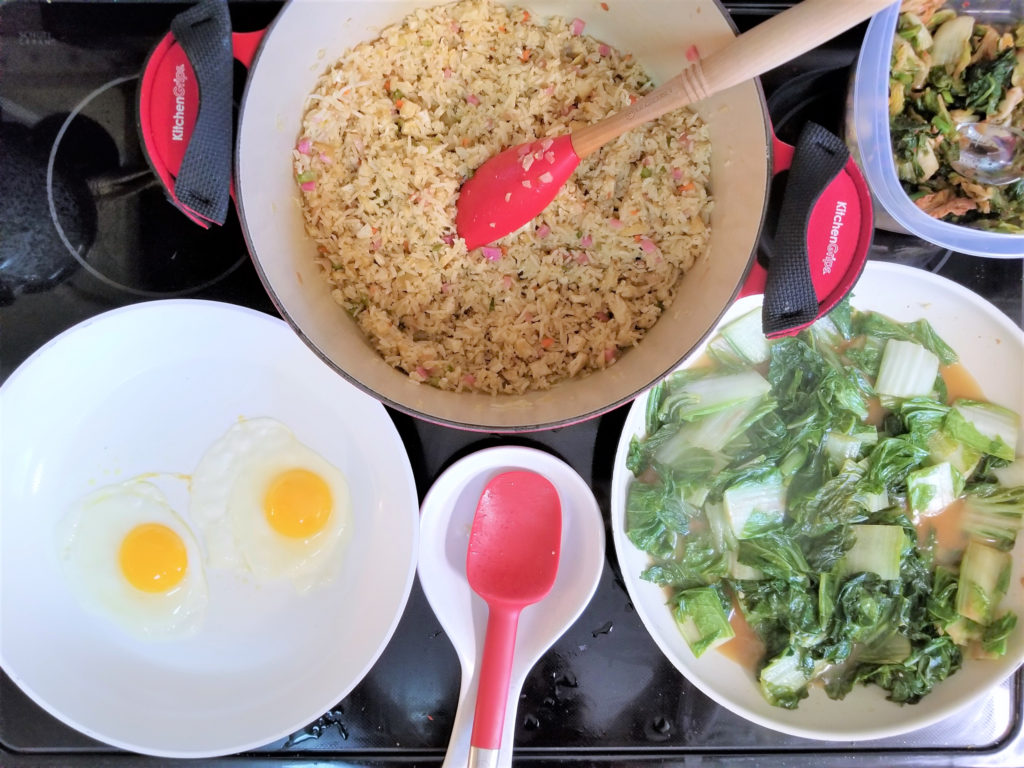
Kimchi and…”leftovers” fried rice, stir-fried Chinese cabbage greens, and eggs.

Gochujang-glazed bbq chicken pizza, ready to be topped with fresh kimchi. 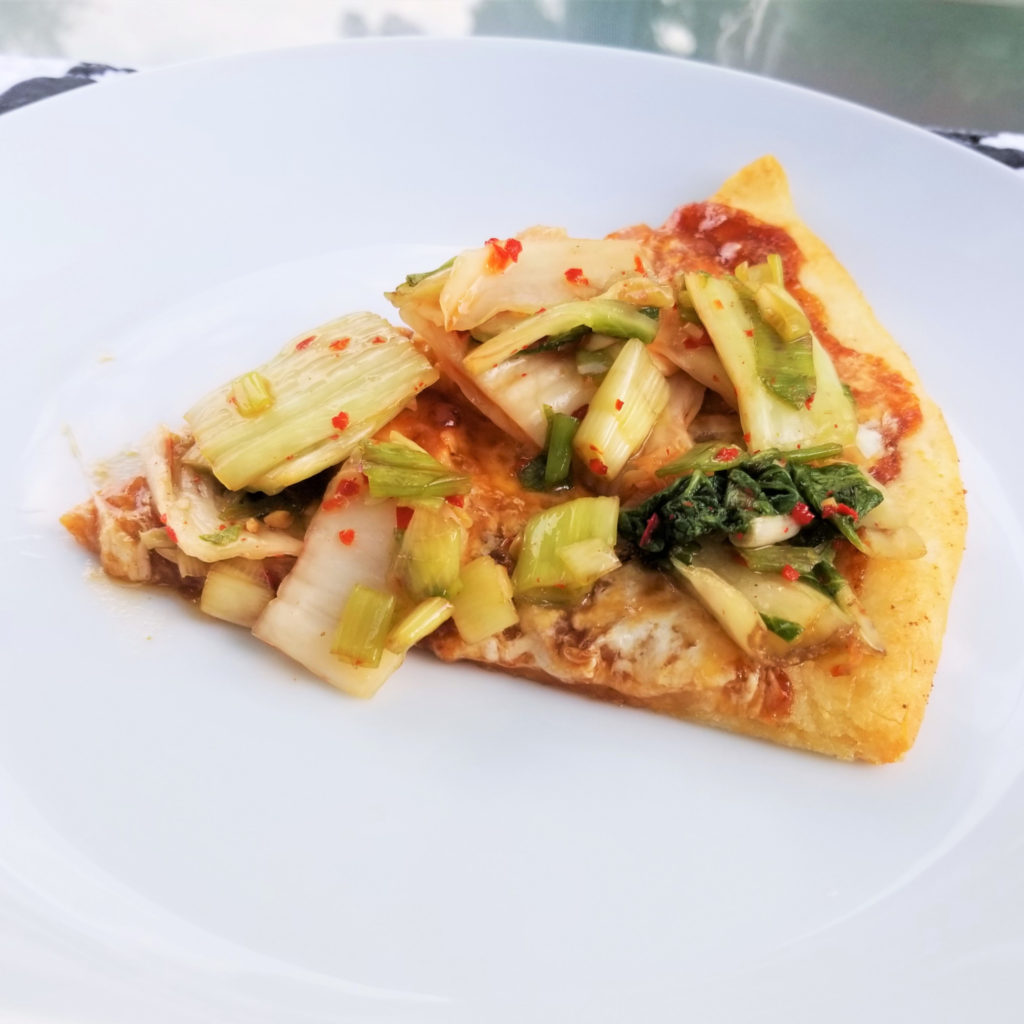
A kimchi-laden slice.
adapted from Mark Bittman’s The Best Recipes in the World
This kimchi isn’t fermented. Instead, it is quick-pickled and ready to eat as soon as you’ve mixed all the ingredients together. It gets more potent after a few days in the fridge, where it lasts 1-2 weeks. It’s great in bibimbap; atop (or as a primary ingredient in) Korean soups; on galbi jim; as a side to Asian-inspired meats in general; combined with scallions in savory pancakes; or–in a more reaching cultural appropriation we particularly enjoy–on top of pizza.
INGREDIENTS:*
- 1 napa cabbage head, c. 2 pounds, washed and separated into leaves
- Lots of coarse Kosher or sea salt (I use Morton’s)
- 20 scallions, both white and green parts, trimmed and roughly chopped
- 1-3 Tbsp gochugaru (Korean red pepper flakes)
- 1/4 cup fish sauce
- 1/4 cup minced garlic
- 2 Tbsp peeled and minced or grated fresh ginger
- 1/4 cup sugar
*Bittman also suggests adding 3 Tbsp dried salted shrimp for a more authentic funk. I’ve omitted this ingredient in recent years. But, back when I began stocking up on international pantry ingredients, I used to visit a huge specialty international grocery store c. once yearly and buy ingredients like this. The little dried shrimps are great if you have them on hand (and can also be used in lieu of shrimp paste in pad thai!), but the kimchi will still taste good without them–just a little less funky.
INSTRUCTIONS:
1. Prepare the cabbage:
- Separate the cabbage leaves, rinse dirt off, and pat them dry.
- Layer the cleaned cabbage leaves in a colander over a bowl or sink (I use a sink), sprinkling salt on each layer of leaves before adding another layer.
- Let cabbage leaves sit and wilt for several hours. Bittman recommends “at least two hours”; I usually leave them out salting for c. 4-6 hours.
- When the cabbage has wilted, and the volume of cabbage leaves has notably decreased, rinse the leaves very well and spin them dry in a salad spinner.*
- Roughly chop the wilted, rinsed, and dried cabbage leaves into bite-sized pieces (c. 1.5 square inch).
*No spinner? Grab some towels and get busy!
2. Place the cabbage pieces in a large mixing bowl and:
- Add: 20 chopped scallions, 1/4 cup fish sauce, 1/4 cup minced garlic, 2 Tbsp minced ginger, 1/4 cup sugar, 1-2 Tbsp gochugaru
- Mix thoroughly and taste. If a redder color (and consequently spicier taste) is desired, keep adding gochugaru until you’re happy.
3. The kimchi can be eaten immediately, or saved in the fridge for later. Bittman says it keeps for a week in the fridge; I have kept it for c. 2 weeks at a time and it has still been tasty and edible.

An extremely large and fresh Chinese cabbage. 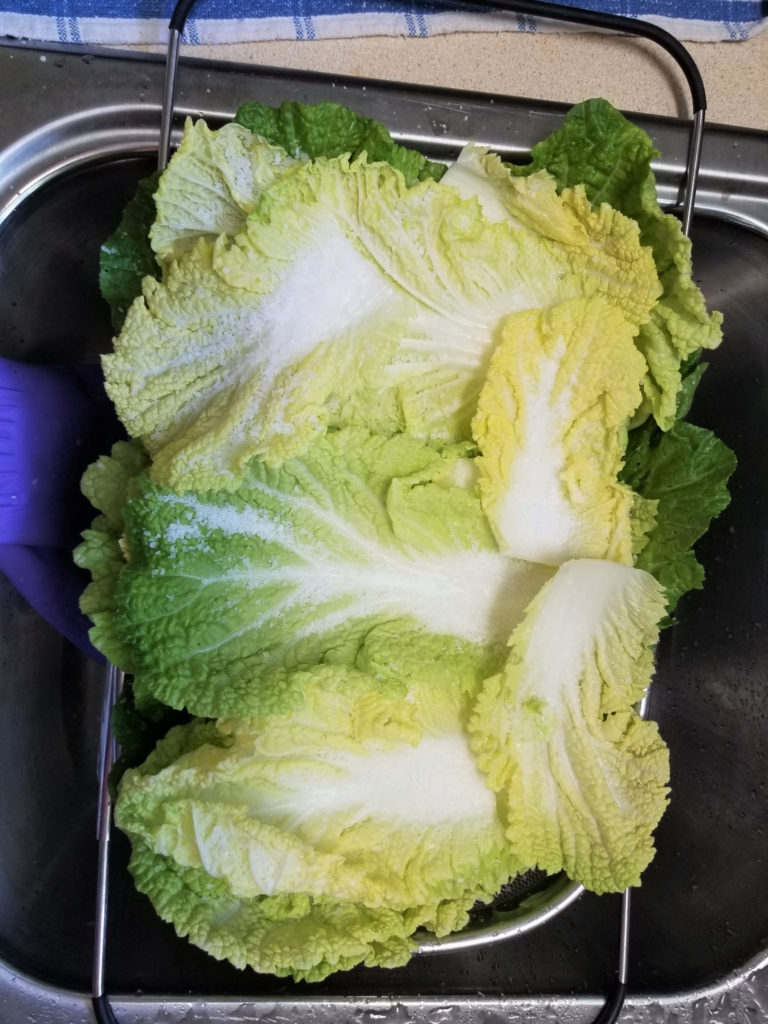
Cabbage leaves have been salted with coarse kosher salt and left to wilt in a colander over the sink for several hours. 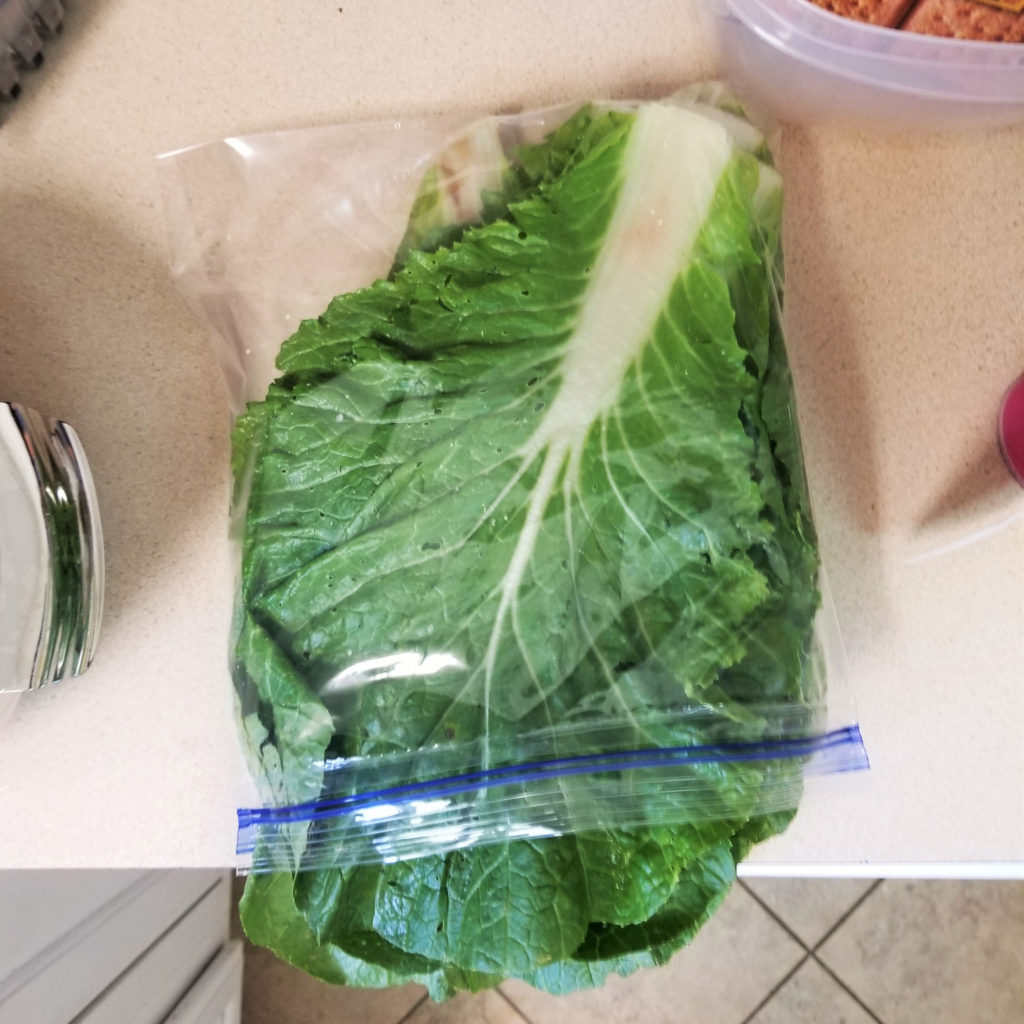
I saved the big outer leaves of the cabbage to stir-fry in another dish. 
Korean red pepper flakes. These are inimitable and give the kimchi its unique spice. 
Wilted cabbage leaves are rinsed, drained, chopped, then combined with chopped scallions and seasonings (including gochugaru) to create quick summer kimchi.
